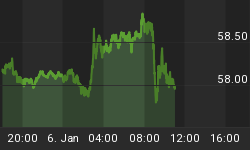"A Widows and Orphans Short"
There are two reasons for focusing on Wells Fargo.
The rally since 2012 has been strong enough to register some technical signals not seen since 2006 - 2007.
After considerable exuberance, credit spreads are in a pattern remarkably similar to the transitions to contraction last seen in the summers of 2008, 2007 and 1998. The key on the earlier examples was reckless lending and aggressive positioning of spread products.
The private sector has been capable of creating highly speculative bubbles on its own. All examples have eventually ended with widespread losses and recriminations. This time around, the ambitions of private speculators have not been constrained by prudent central bankers. Indeed, too many central bankers have become rather frantic in attempting to prevent bad things from happening.
The bubble that blew out in 2007 was yet another example of a Great Bubble that began with the South Sea Bubble of 1720. All five from then to 1929 had similar climaxes and consequences. The reason for including the action in 1998 in this review is that the action in many banks was so outstanding that our proprietary "Bank Trading Guide" provided a strong "Sell" signal.
Our focus was on Citi and it topped in 1998 at 203 in August and 208 in early October. In the discovery of the LTCM problem Citi plunged to 162 in late October. Through the summer as credit spreads were widening our advice was that "Most banks are a nice Widows and Orphans Short".
It was controversial.
Technical Position:
As a group bank indexes such as BKX do not register extreme momentum but the Weekly RSI reached almost as high as in 2007 and in 1998. As noted, the index registered a Weekly "Sequential" in the middle of June.
However, WFC has been a leader and has generated an Upside Exhaustion which is momentum, and now a Monthly "Sequential Sell", which is pattern. This took some 15 months and the time difference in 2007 was some 10 months.
- The large red dot records the Monthly Upside Exhaustion signal.
- The number '13' notes the Sequential Sell pattern.
As represented by momentum in the BKX and the Monthly signal on WCX, technically, the financial sector is vulnerable. As with the call in 1998, it could take many weeks to become effective.
Fundamentals:
Ironically, the recent boost to bank stocks has been prompted by a modest turn to curve steepening, which enhances lending spreads for commercial bankers. The problem is that in a world of financial bubbles, as steepening progresses it can lead to the next contraction. More recent examples include 2007 and 1929.
The business and credit cycle that began in 2009 is now mature and action in spreads is also indicating change. The issue for us in the summer of 2007 and 1998 was the seasonal reversal in June to widening. When preceded by outstanding speculation, the consequences can be severe. This is made worse by the unprecedented bubble in sovereign and lower-grade debt.
Charts of US Corporate Spreads review the seasonal pattern.
US Credit Spreads - 2007 - Calamity
- The initial breakout was achieved on June 30.
- The critical breakout was accomplished on July 26.
- The equivalent breakouts on the 1998 LTCM disaster were on July 1st and July 30th.
Credit Spreads - 1998 - LTCM
- The big "sure thing" in 1998 was that spreads for different countries in Europe would narrow.
- It was called "Convergence".
- And the central bankers would make it happen. They even directly funded LTCM.
- Seasonal narrowing ended at 96 bps on May 26th, 1998.
- The initial breakout was at 104 bps, accomplished on July 1st.
- The deadly breakout was widening above 107 bps on July 30.
- LTCM's portfolio felt the change earlier than the breakout would suggest. The return for May was -6.42% and for June it was -10.14%.
- The panic as well as LTCM ended in October.
US Credit-Spreads - 2015 - ????
This year's initial breakout was accomplished at 193 bps on June 29th.
If spread-widening continues and takes out resistance at 213 bps it will be equivalent to the key moves in July 2007 and of July 1998.



















